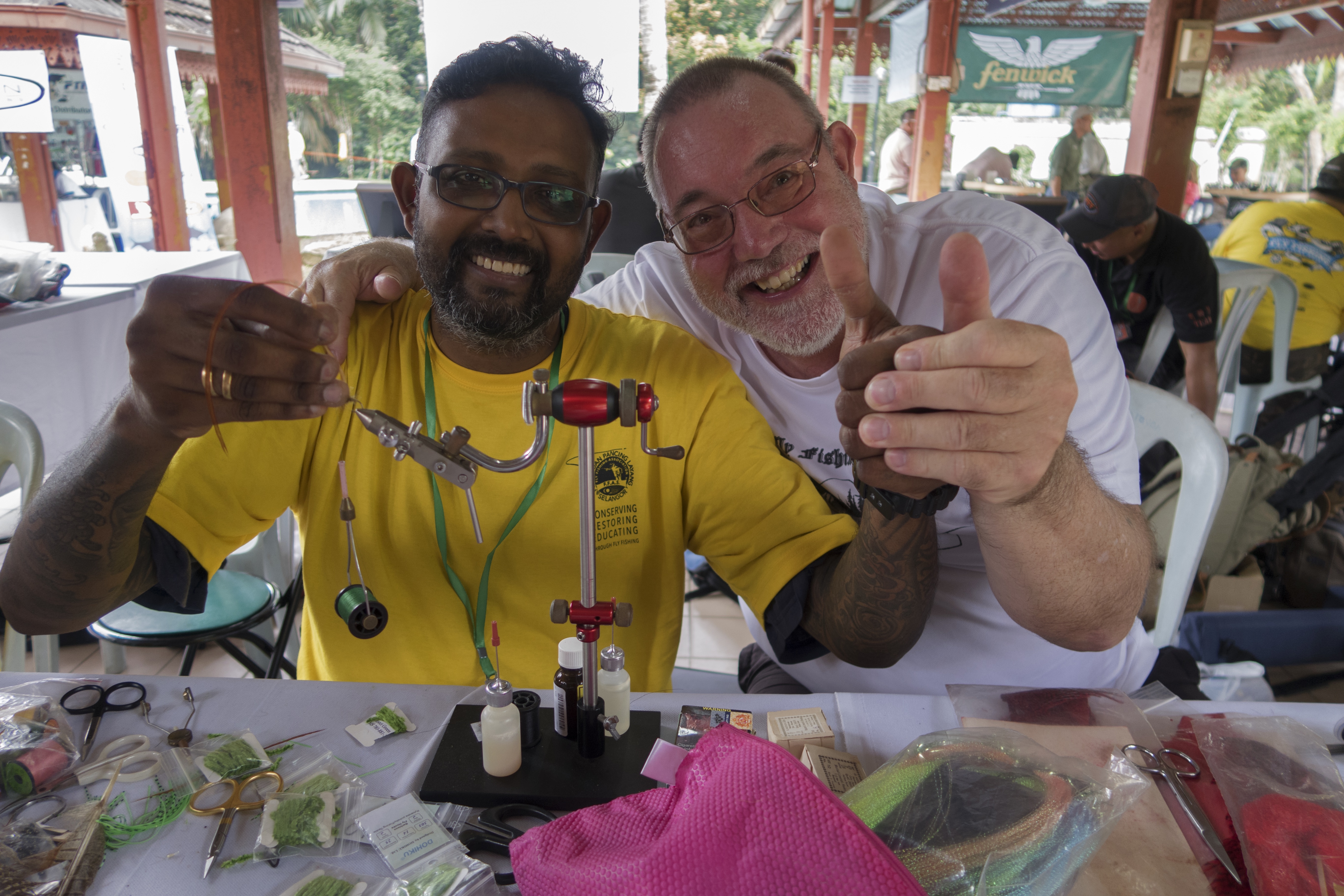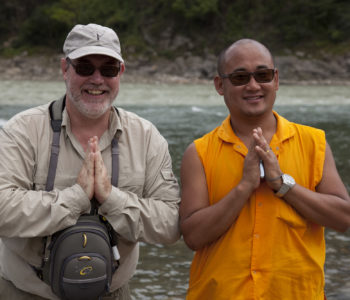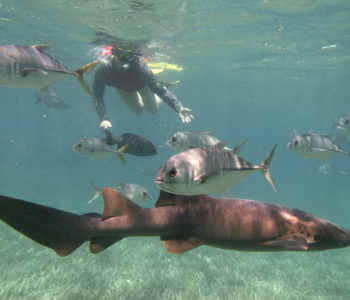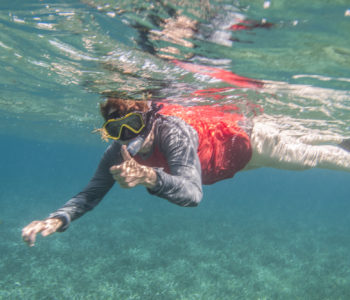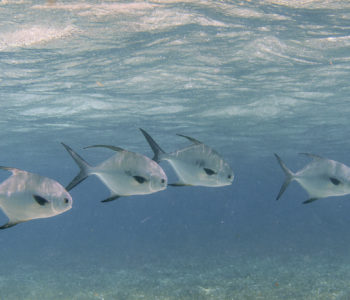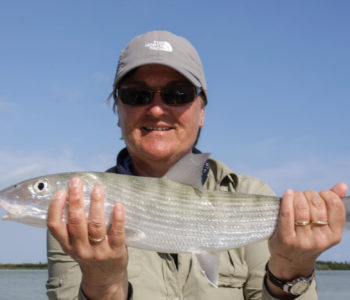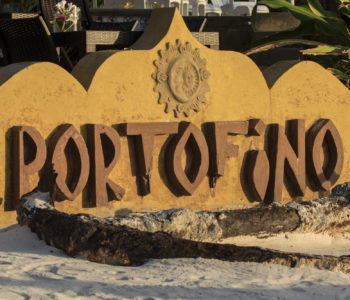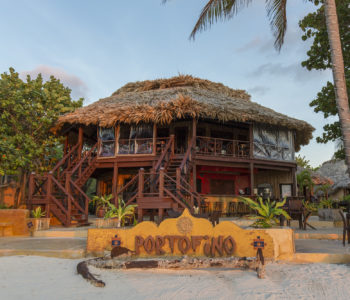
Made in South Africa (part 3)
The history of the J-Vice
Let me start with a little background about the originator of the J-Vice; Jay Smit. I have known Jay since we first met in New Jersey somewhere in the early years of new millennium. I forget the exact dates. At that particular meeting Jay told me his background and I swapped my special whip finisher and a bunch of flies for one of Jay’s very special bobbins and hackle pliers. I got hooked on both of them and have kept using them as indispensible instruments among my most favourite tying tools. Of course I tried Jay’s vice too and I was highly impressed, but in those days my contacts with Regal were still very good and that meant that I didn’t go any deeper into the J-Vice right then.
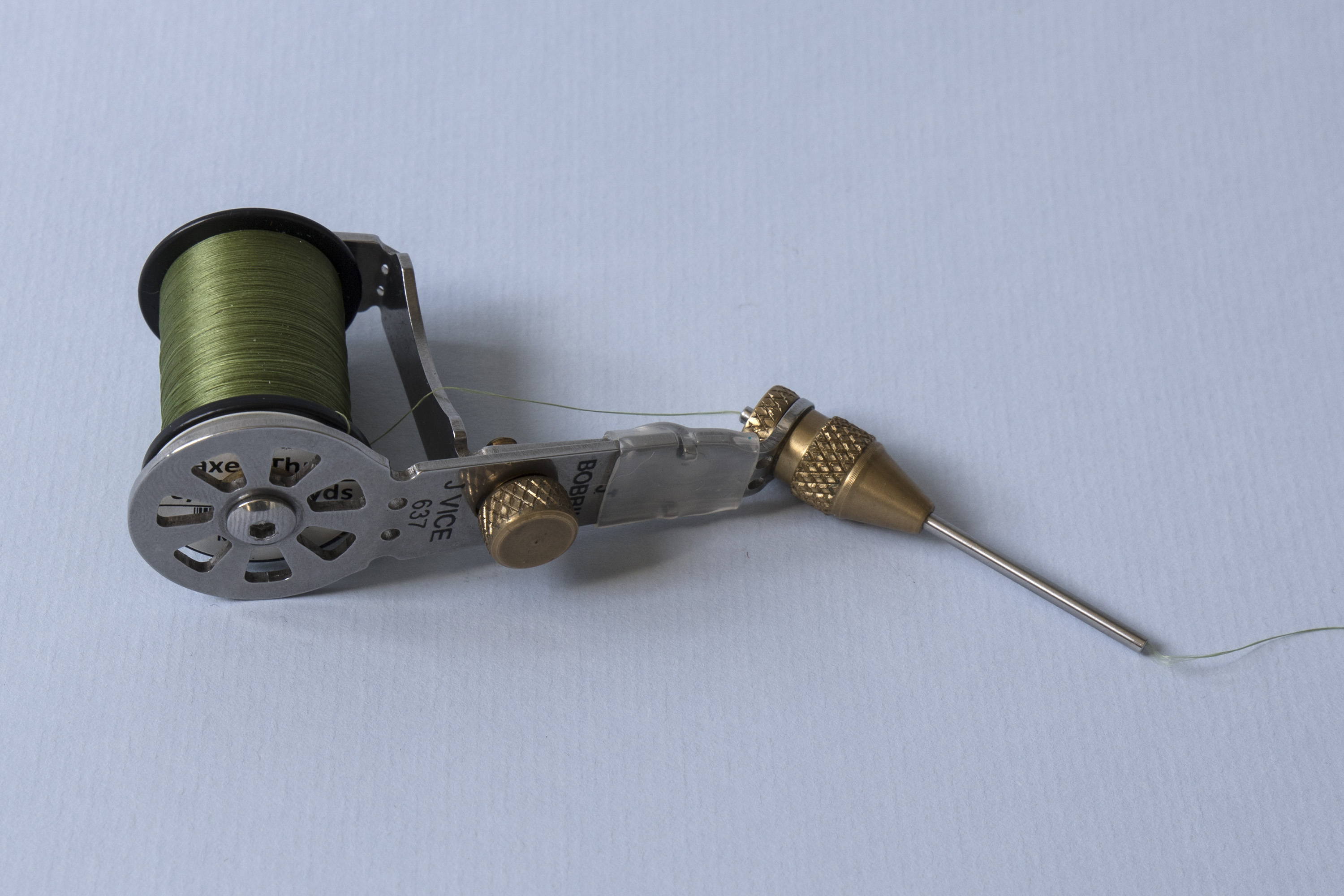
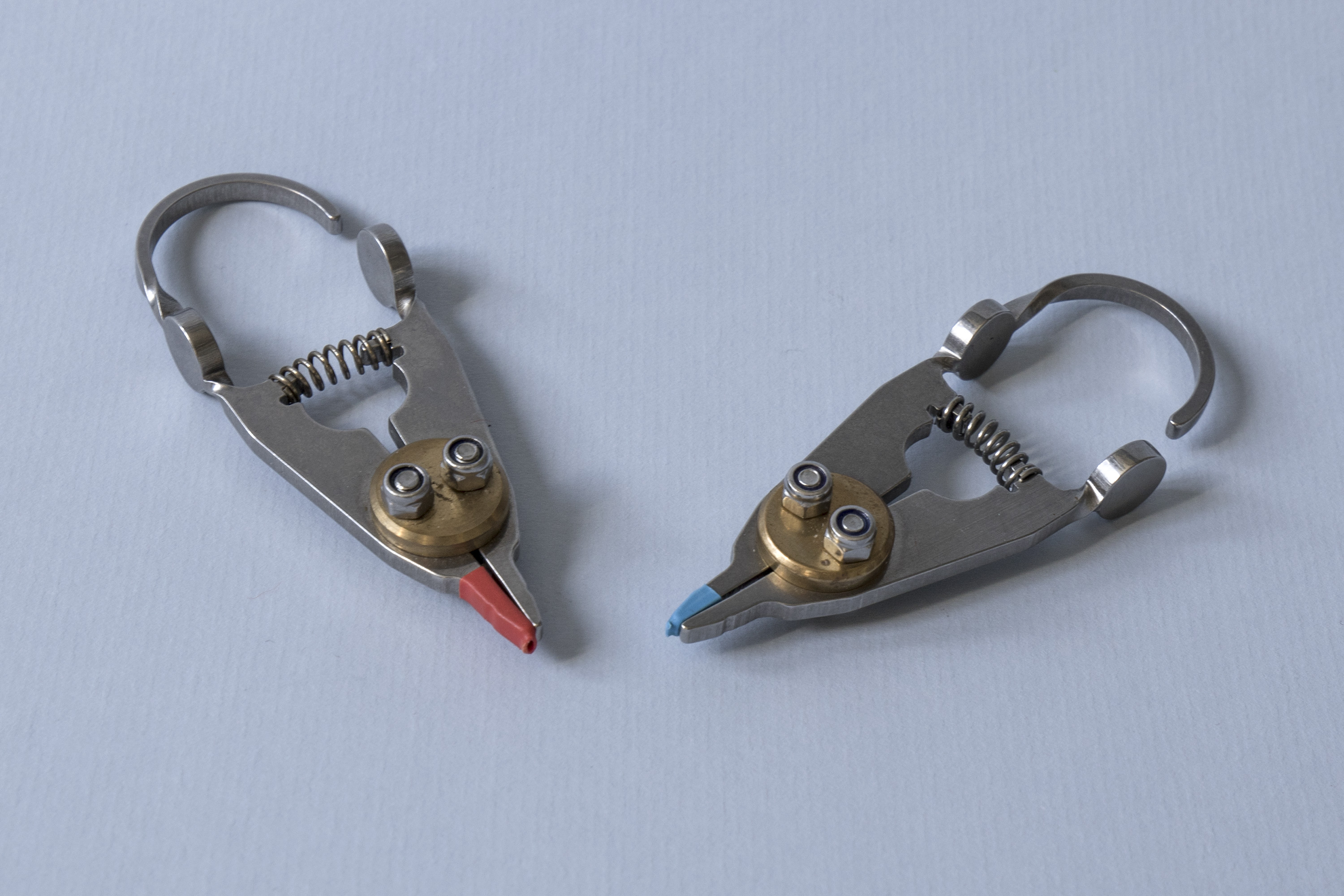
I love Jay’s story and how he got into vice building and the fact that he designed everything by himself, which made me respect him even more. Jay was born in a farmhouse in the Howick area in KwaZulu-Natal in South Africa. He spent a lot of his early days in the farm workshop dismantling and repairing mechanical things ranging from water pumps to tractors. His mentor was his dad. He later studied electronics and worked for Eskom, South Africa’s electricity-supplying parastatal, for 17 years before he moved to a manufacturing company in Durban. Here Jay modified and built custom machinery to enhance production. This led him to becoming the technical director of a group where he set up a small division that built specialized production machines. All the skills gleaned during this period were of enormous help to him when he later started making his own vice.
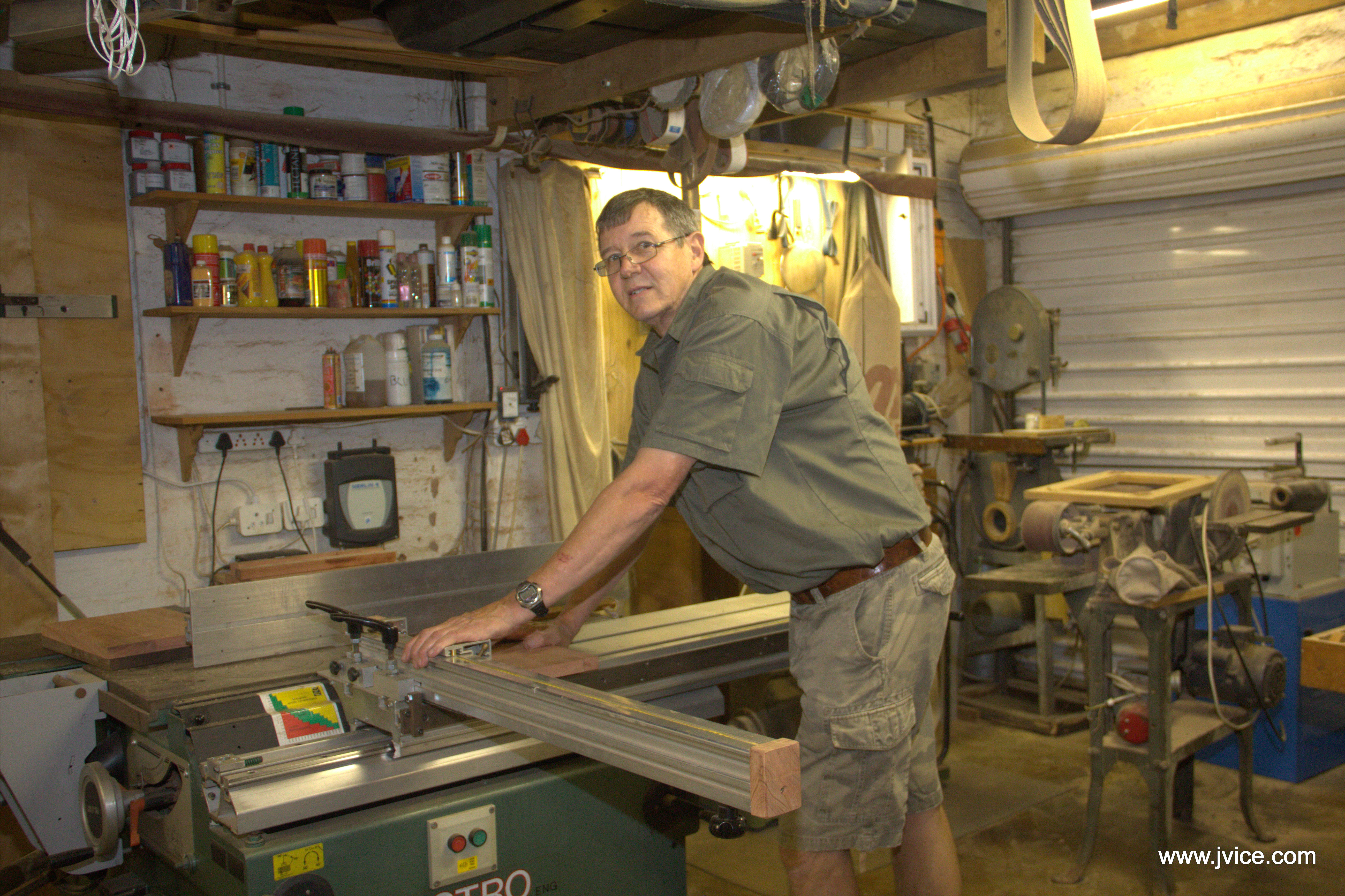
Jay working on the next wooden base
Jay grew up fishing the saltwater and somewhere in his 20s he discovered fly-fishing and bought a six-weight outfit. Sadly he didn’t have much success and the rod and reel disappeared amongst the junk in his garage for quite some time. In 2001 he rediscovered fly-fishing on a trip to the Drakensberg with a friend, Geoff Dettmer. After many hours practicing and struggling on the water, he landed his first fish on a Woolly Bugger. It was a beautiful 1.5kg rainbow trout, and after catching a second fish just a few minutes later he was hooked for life. When he got back from the trip he decided to pick up fly tying and bought an entry-level rotary vice. This cheap and nasty vice is the main reason that the J-Vice came into being. Everything was wrong with the vice; it did not rotate smoothly and would not hold a hook properly. Jay got so frustrated that the vice quickly found his way into the dustbin. Fully convinced that he could make something far better Jay immediately started a special project to build his own vice. After lots of research and many hours of drawing sketches he disappeared into his workshop and came out when his first J-Vice version was completed. It was not bad, held a hook well and rotated smoothly. .

Tying flies intensively and continuously making notes for several weeks in a row, he jumped into his workshop again to produce a second and better version. It was better indeed, but he still wasn’t fully pleased so he did the same trick again and these notes led to the third version, which finally worked to his satisfaction
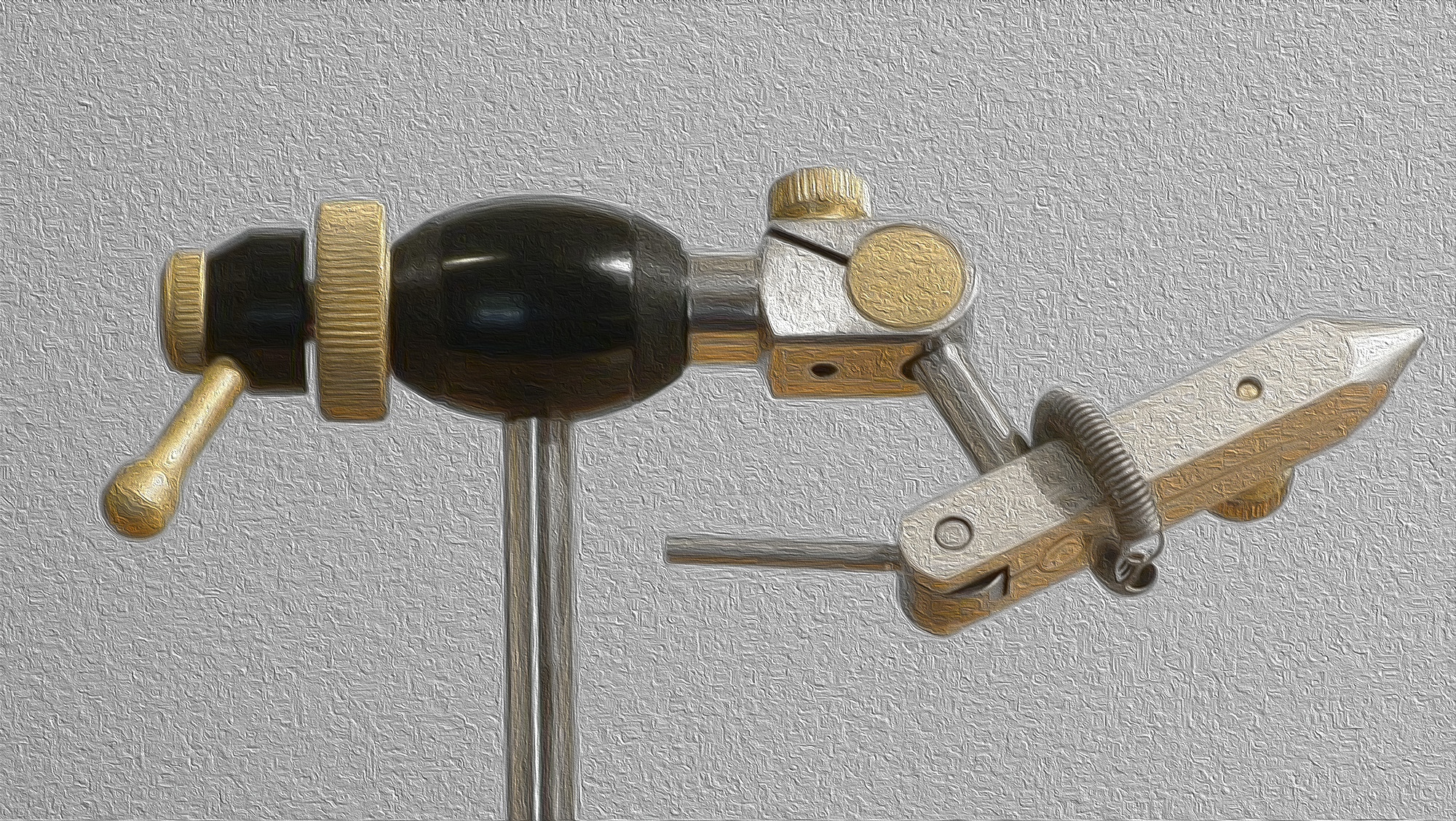
In October 2002 Jay went on a salt-water trip with Ufundu Flyfishing Safaries to Mtentu on the coast of the Eastern Cape with salt-water guide Ben Pretorius. Ben was highly impressed with his vice and asked him to produce several for him to sell because he was looking for exclusive products manufactured in South Africa to add to his range of fishing gear. By then it took over 40 hours to hand make a single vice, and Jay was not immediately happy with the idea, thinking it would be far too expensive for mass production. Ben persisted and carried on nagging him until Jay eventually gave in. Jay than met a friend who owned a CNC machine (computer controlled milling machine) and together they made some changes to the machine to do the job properly. The whole process required a few adjustments in the vice’s design to make it more machine friendly.
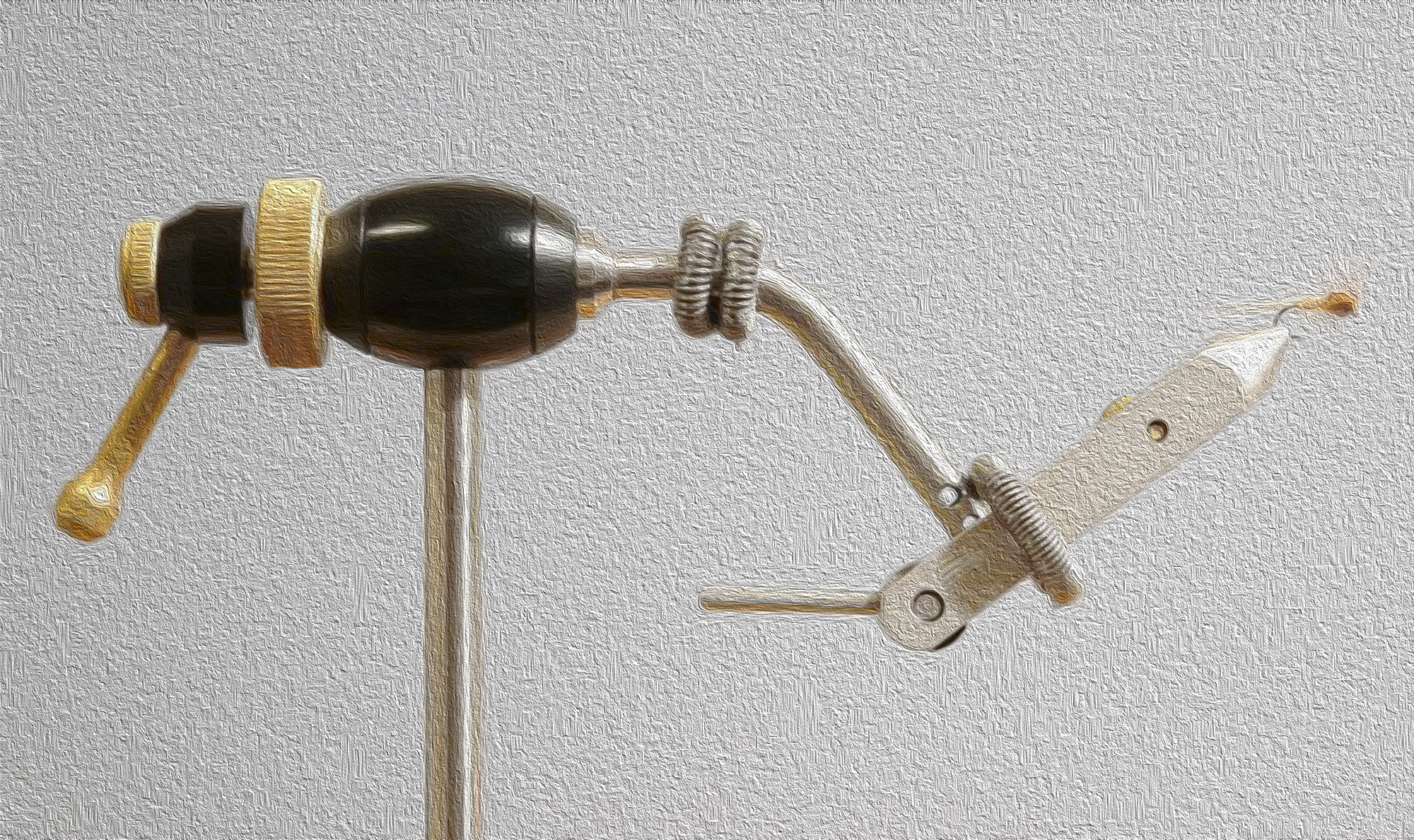
Meanwhile Jay had to dig deep to find enough money to order the first minimum batch of 50 sets of components. A few weeks later he picked up the boxes of components and the first J-Vices were put together in November 2002. There were a few hiccups and the main stems were not to his liking and had to be remade to a new design that resulted in a yet deeper dig into his dwindling funds. In February 2003, Ben sold the first J-Vice to Dr Sakkie Bezuidenhout, a brain surgeon from Pretoria, who attended one of Ben’s Kosi Bay trips, and in the same month, he sold two more. Things suddenly were looking up. By the end of that year 37 vices had been sold and the idea of selling them became reality, and the prospect of recovering his original investment no longer seemed remote.
